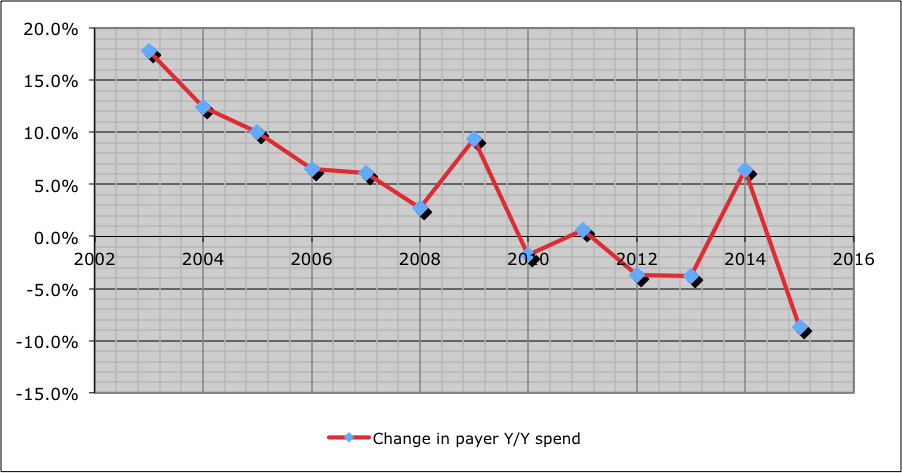The IAIABC meeting in Portland Maine (a singularly GREAT location for conferences) includes some really deep dives into very hot topics – this morning’s discussion of value-based payment was certainly both.
Big takeaway – CMS is going BIG into alternative payments tied to quality; estimates are 72 million people will be covered by ACOs by 2020.
David Deitz MD led off with a summary of what’s happening with Accountable Care Organizations (ACOs). Note this is NOT specific to work comp, but does have significant implications therefore. A few key takeaways:
- Doc led ACOs performed better than hospital led-ACOs
- ACO savings generally improved as ACOs got more experience, with half of the ACOs four years into the program earning performance bonuses.
- some indication that quality has improved – BCBS MA, Marshfield Clinic are two that have delivered results.
- several key process measures of quality show good improvement – hospital readmissions being one example.
What happens to losers in the quality race? Providers in NJ who didn’t meet quality standards sued and employed various other methods to try to address Horizon BC BS’ refusal to admit them to their Tier One network. Expect this “denial of fairness” argument to show up in other states where providers are booted out of narrow networks.
Kathryn Mueller, MD, Medical Director of Colorado’s Workers’ Comp and Dan Hunt, DO, Medical Director of Accident Fund, gave the regulator’s and payer’s perspectives. As two of the more thoughtful medical leaders in workers’ comp, Drs Mueller and Hunt dug into the reality of work comp and value based payment.
Dr Mueller noted that bundled payments for surgery won’t necessarily help reduce the number of unnecessary surgeries, a point the audience heartily endorsed.
Dr Hunt has experience with bundled payments from his work as a surgeon; he noted that a lot of analysis and preparation went into developing a single bundled payment for one diagnosis in one location. He also reported CMS is looking at a zero-based bonus system, where there may well be more losers than gainers (this is consistent with CMS’ expectations). And, with work comp’s focus on functionality makes for a “better” outcome metric than those used in other payment systems.
So what does this mean for work comp?
- FFS leads to more care – inevitably
- FS may constrain costs but, FFS pays bad docs and good docs the same amount
- So yes, value-based payment makes a ton of sense for workers’ comp, but…
- Effective payment design must link value and outcomes – and NOT pay for harmful or valueless care.
What might work in WC? Not medical homes, likely not shared savings or capitation. Possibly bundled payments, and pay for performance only with different metrics.
Emphasis on different metrics – because we in workers’ comp care about stuff other payers don’t, namely functional improvement and indemnity payments chiefly among them.
Data from a variety of providers indicates bundled payments have reduced length of stay, delivered lower costs and higher patient satisfaction.
And due to indemnity payments, work comp has even more incentive to pay for bundled care based on functional outcomes. As a lot of high cost care in comp is orthopedic, which lends itself well to bundled payments, comp is well positioned to use bundled payments.
However…there are lots of barriers, regulatory, financial motivations of bill review and network vendors, TPAs, insurance companies, and no standard outcomes measures across work comp.
Dr Deitz opined that incentives to cost-shift may drive docs to categorize injuries as occupational in high FS states such as Connecticut and Illinois.
What does this mean for you?
Lots of frictional, regulatory, and entrenched interest resistance will make it hard for bundled payments – in fact most types of value-based payment – to see significant adoption in workers comp.
Note – I captured this as accurately as possible, however I may have unintentionally misquoted the speakers. Corrections welcomed.







